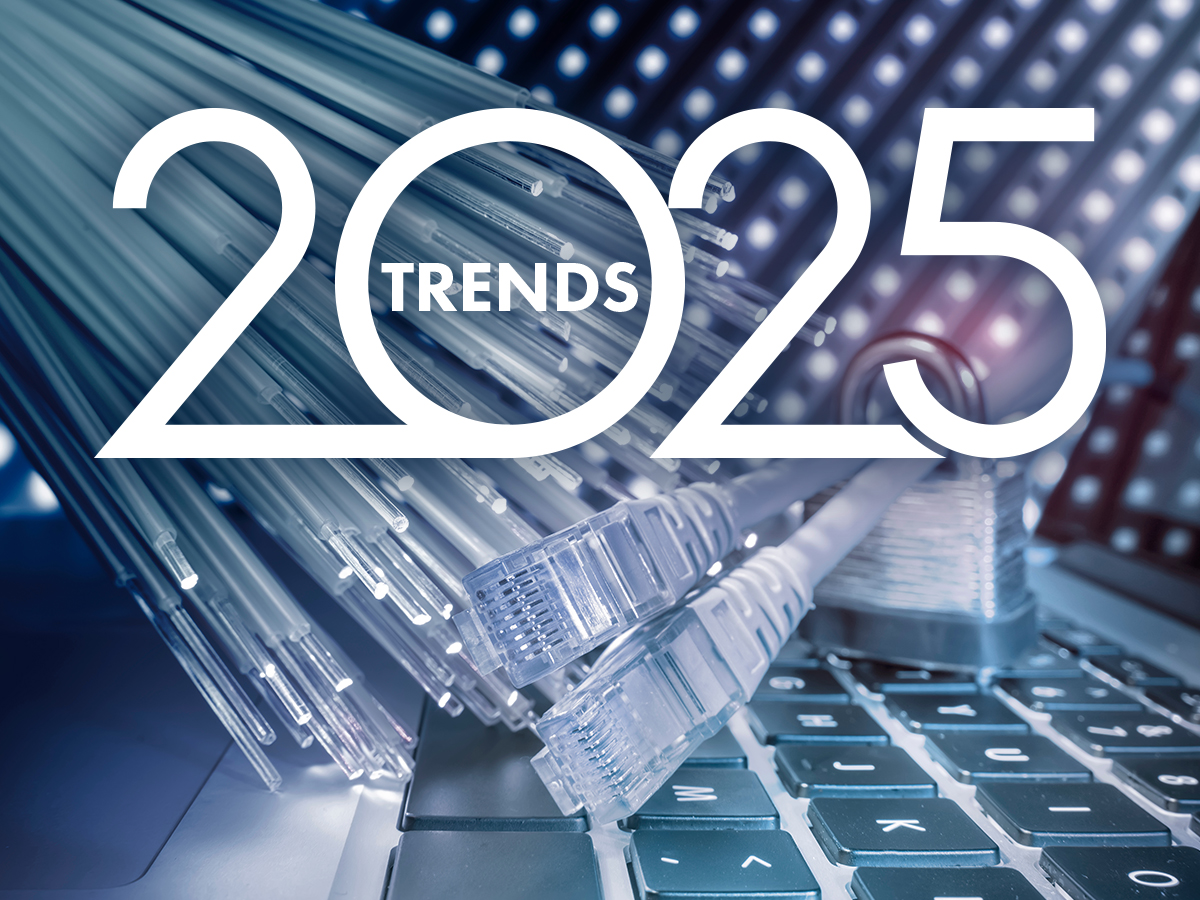The future of computer networks is poised for significant transformation as we approach 2025 and beyond. With advancements in technology and the increasing demand for connectivity, several key trends are emerging that will shape the landscape of computer networks in the coming years.
AI Integration in Network Management
One of the most notable trends is the increased integration of artificial intelligence (AI) in network management and operations. This shift is leading to more autonomous systems capable of self-optimization and troubleshooting, significantly reducing the need for human intervention and enhancing overall network efficiency.
AI Applications Across Industries
AI applications are expanding across various industries, particularly in healthcare and manufacturing. Improved communication capabilities and faster wireless speeds are driving this growth, allowing for real-time data analysis and decision-making that enhances operational efficiency and patient care.
Acceleration of IPv6 Adoption
The acceleration of IPv6 adoption is another critical trend, resulting in a more efficient and secure internet infrastructure. With nearly unlimited IP address availability, IPv6 is essential for supporting the growing number of devices connected to the internet, thus addressing the limitations of the previous IPv4 system.
Security and Trustworthiness of AI Systems
As AI systems become more prevalent in critical applications, there is a greater emphasis on their security and trustworthiness. Ensuring that AI technologies are reliable and secure is paramount to gaining user confidence and preventing potential vulnerabilities.
Proliferation of 5G Technology
The proliferation of 5G technology is set to revolutionize mobile connectivity, providing significantly faster data speeds and improved signal coverage. Ongoing development and testing of standards will further enhance the capabilities of 5G networks, enabling new applications and services.
Emergence of 4.5G and Pre-5G Products
In preparation for full 5G deployment, there is an emergence of "4.5G" and "pre-5G" products. Companies are retrofitting existing networks to accommodate the anticipated demands of 5G, ensuring a smoother transition and enhanced performance.
Adoption of IoT Devices
The widespread adoption of Internet of Things (IoT) devices is creating a more interconnected environment. Smart homes, cities, and industries are becoming the norm, with IoT devices facilitating seamless communication and automation across various applications.
Advancements in Wearable Technology
Wearable technology is advancing rapidly, focusing on health and fitness tracking. Improvements in processing speeds and battery life are making these devices more efficient and user-friendly, contributing to the growing trend of health-conscious consumers.
Development of Smart Kitchen Appliances
Smart kitchen appliances are being developed to utilize voice commands and advanced food recognition capabilities. These innovations enhance convenience in meal preparation and cooking, making everyday tasks easier and more efficient.
Introduction of Smarter Lighting Systems
Smarter lighting systems equipped with Wi-Fi or Bluetooth connectivity are being introduced, offering improved quality and programming options. These systems allow users to customize their lighting environments, contributing to energy efficiency and enhanced user experience.
Expansion of IoT Applications in Public Spaces
The expansion of IoT applications in public spaces, such as stores and restaurants, is enhancing customer experiences and operational efficiency. These applications enable businesses to gather data and insights, improving service delivery and customer satisfaction.
Concerns Over Privacy and Security Risks
With the increasing number of IoT devices comes growing concerns over privacy and security risks. The access these devices have to personal data raises significant questions about data protection and user privacy, necessitating robust security measures.
Enhanced Network Security Measures
To combat evolving cyber threats, enhanced network security measures are being implemented. The use of AI for threat detection and response is becoming more common, allowing for proactive security management and risk mitigation.
Reliance on Cloud-Based Services and Edge Computing
There is a greater reliance on cloud-based services and edge computing to manage the vast amounts of data generated by connected devices. This trend allows for more efficient data processing and storage, improving overall network performance.
Development of Robust Network Architectures
The development of more robust and flexible network architectures is essential to support the diverse needs of users and devices in a hyper-connected world. These architectures will facilitate better resource allocation and improved service delivery.
Collaboration for Standards and Regulations
Increased collaboration between telecommunications companies, tech firms, and governments is crucial for establishing standards and regulations for emerging technologies. This cooperation will help ensure interoperability and security across different platforms and devices.
Rise of Decentralized Networks and Blockchain
The rise of decentralized networks and blockchain technology is enhancing security and transparency in data transactions. These technologies provide a more secure framework for data sharing and management, addressing concerns over centralization and data breaches.
Evolution of Network Protocols
The continued evolution of network protocols is necessary to accommodate the growing complexity and scale of global internet traffic. As new technologies emerge, protocols must adapt to ensure efficient and reliable communication.
Focus on Sustainability and Energy Efficiency
Finally, there is a strong focus on sustainability and energy efficiency in network infrastructure. Driven by the need to reduce carbon footprints and operational costs, organizations are seeking greener solutions that align with global sustainability goals.
If you liked it and want to know more content similar to Future of Computer Networks: Trends for 2025 and Beyond. Visit our category Tech











By posting you agree to the Privacy Policy
Basic information on data protection